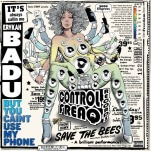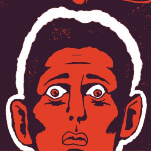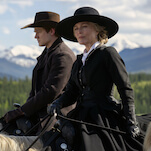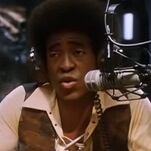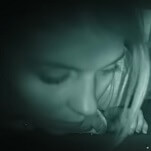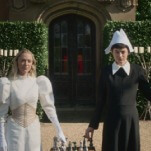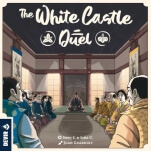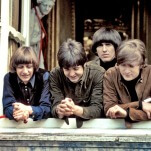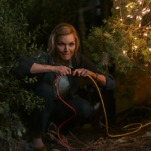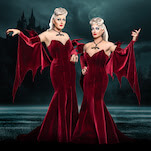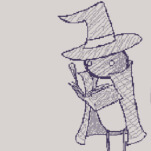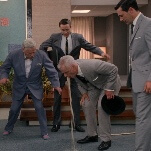Few things are trickier than telling stories about storytelling. At best, that sort of self-reflection can be profound. At worst, it can lapse into a loop of solipsism. In Some Kind Of Fairy Tale, the latest novel from The Tooth Fairy author Graham Joyce, he doesn’t make it any easier on himself. The spine of the story is simple: A teenage girl disappears in the woods near her English home, then returns to her family 20 years later, barely aged, and with the outlandish explanation that she was abducted by fairies. Around that sturdy hook, Joyce wraps an increasingly elaborate tangle of symbols and themes, many of which push against the fourth wall. Then again, Some Kind Of Fairy Tale is all about passing through walls: between people, between truths, between worlds. But where a lesser writer might strain to keep all those layers in focus, Joyce projects a vision of the heart as rich and ethereal as the age-old tradition Fairy Tale invokes.
Joyce has been through this door before. Many of his novels, including 2011’s masterful The Silent Land, traffic in the kind of quiet, contemplative, mundanely magical realism that straddles the line between literary fiction and fantasy. As if acknowledging—even grappling with—his dual identity as a writer, he uses Fairy Tale as a portal between poignant domestic drama and otherworldly suspense. The returned girl, Tara, reveals an increasing amount of tangible evidence to back up her story. With a nod toward the real-life Cottingley Fairies case, Joyce begins to sink his teeth in deeper. Her brother, Peter, is now 40, married yet damaged by the unsolved case of his missing sister. Her former boyfriend (and Peter’s estranged best friend), Richie, is in even worse shape, having been initially accused of her murder, then squandering a promising music career in a fog of pot and scotch.
The vivid particulars of Tara’s tale—including the notion that six months passed during her visit to the fairy realm while 20 years passed outside—are challenged by an eccentric psychiatrist named Dr. Underwood. Here, Fairy Tale becomes unstuck, in a good way. Colorful to the point of caricature, Underwood extravagantly refutes her story, even as his pet theories echo much of its metaphysics. Again, the membrane between worlds is being poked. But when Westwood notes how Tara’s story “rebuilds a new narrative” and “confabulates with literary convention,” the poke becomes a punch. Joyce begins graphing Jungian parallels between fiction, archetype, and memory, and Fairy Tale is itself part of his calculus. The fourth wall is only pierced twice—in a device that, naturally enough, bookends the story—but Joyce grows so implicitly intrusive, it’s hard not to feel heavy hands drawing the strings taut.
Thankfully, Joyce excels as a puppeteer. With an intellectual dexterity that’s never flashy, he brings the full force of his philosophizing to bear on the characters. They all grapple with their own roles as storytellers—or liars. In one of the book’s best subplots, Tara’s 13-year-old nephew Jack accidently kills the neighbor’s cat. His hilarious, elaborate scheme to replace the cat with a lookalike raises the idea that perhaps Tara isn’t truly who she claims to be. It ties into a far more horrific thread: the account of a 19th-century murder, recounted via epigraph, in which a man burned his wife alive because he believed she was a fairy-possessed imposter. This isn’t Joyce’s only flexing of his horror chops. In a flashback to Richie’s police interrogation the week after Tara’s disappearance, a hideously mush-mouthed detective tries to beat a confession out of the teenager—all while insisting Richie call him the stoowy-teller.
Ultimately, it isn’t Joyce’s clever self-awareness that pushes Fairy Tale into the stratosphere. It’s the way he weaves these twisty ideas into a straightforward, achingly resonant story of a broken man who’s found his long-lost sister. His prose and dialogue, even more than usual, are carved with balance, clarity, and subtlety. As a writer, Joyce is often praised as “unsentimental.” That couldn’t be further from the truth. Sentiment underscores everything in Fairy Tale, from Tara’s struggle to establish her sanity to the heartsick people who loved who she was—and are trying to love what she’s become. That sentiment, though, is rarely precious, and it never comes cheap. As its title trumpets, Some Kind Of Fairy Tale meditates on the nature of what it means to tell stories. But wisely and hauntingly, it does so through a spellbinding story of its own.





